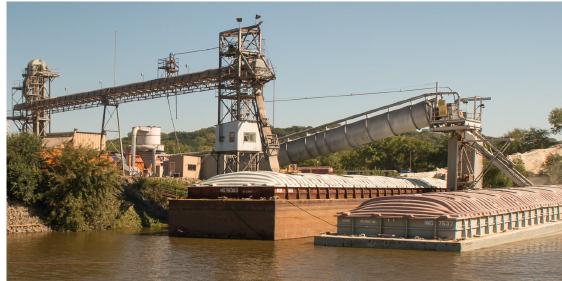The Mississippi River: An Economic Engine

This blog was taken from an article published on LinkedIn by Kathryn Sarnecki, vice president of redevelopment and harbor management at the Saint Paul Port Authority.
Economic Contribution
The Mississippi River continues to be an economic engine for the city of Saint Paul and the state of Minnesota. It connects Minnesota farmers to the global marketplace, acts as a multi-modal hub for moving products, provides high paying jobs with limited barriers to entry, and positively contributes to the tax base. Yet there continues to be a level of mystery surrounding river shipping in our community.
I am often surprised by how many people don’t know that Saint Paul has an active river port. They see barges coming up and down the river, and see businesses positioned along the banks, but never put the two together. They don’t recognize that significant commercial activity is happening on the river, when fact, Saint Paul has the largest river port in the state. I would estimate that in 2018, approximately 7 million tons of commodities passed through the Port of Saint Paul.
If it wasn’t for river shipping, Minnesota producers wouldn’t be as competitive in the global marketplace. According to the Minnesota Department of Transportation, more than 50 percent of our state’s agriculture exports are shipped via the Mississippi River, starting as far north as Saint Paul and making their way to the Gulf of Mexico. Barges are then transferred to oceangoing vessels and sent to their final international destinations. Commodities are delivered to countries as far away as China, Colombia, Japan, and South Korea.
Benefits of Shipping on the Mississippi River
According to the U.S. Army Corps of Engineers, “Barges are well suited for the movement of large quantities of bulk commodities and raw materials at a relatively low cost. These are raw materials or primarily manufactured products that are typically stored for further processing or consumption or transshipped for overseas markets.” In Saint Paul, top imports include fertilizer, cement, aggregate and road salt. Top exports include soybeans, corn, grain, wheat, and scrap metal.
The efficiency of river shipping, paired with a 10-year run of a growing economy, has led to increased demand in the marketplace. Each month, we receive calls from companies wanting to lease space on the river – space we don’t have available. In response, we have gotten creative by connecting interested shippers with current tenants. We now have tenants maximizing their facilities by operating intermodal terminals that provide invaluable transloading, storage, and handling of other people’s products.
Current Challenges on the Mississippi River
Today, our biggest need is infrastructure funding. Much of our infrastructure has reached the end of its useful life and we’re operating with fingers crossed that each shipping season will be business as usual. We would like to be more proactive in our system repairs and upgrades. We are seeking funding for multiple projects at the federal, state and local levels.
Our biggest success came via the Minnesota Ports Association which includes Saint Paul Port Authority, Duluth Seaway Port Authority, Red Wing Port Authority and Winona Port Authority. Together, we advocate for infrastructure funding at the Minnesota legislature. In 2018, $5.2 million was awarded to the Ports Development Assistance Program, managed by the Minnesota Department of Transportation. All members of the Ports Association had the opportunity to apply for grants from these funds.
The Saint Paul Port Authority was fortunate to receive $2 million to upgrade Barge Terminal One with a new loading station. We have a tenant that will invest an additional $7 million into the site. And while this a strong start, additional public and private investments are needed to meet future infrastructure needs and keep Minnesota a key freight node in the nation.